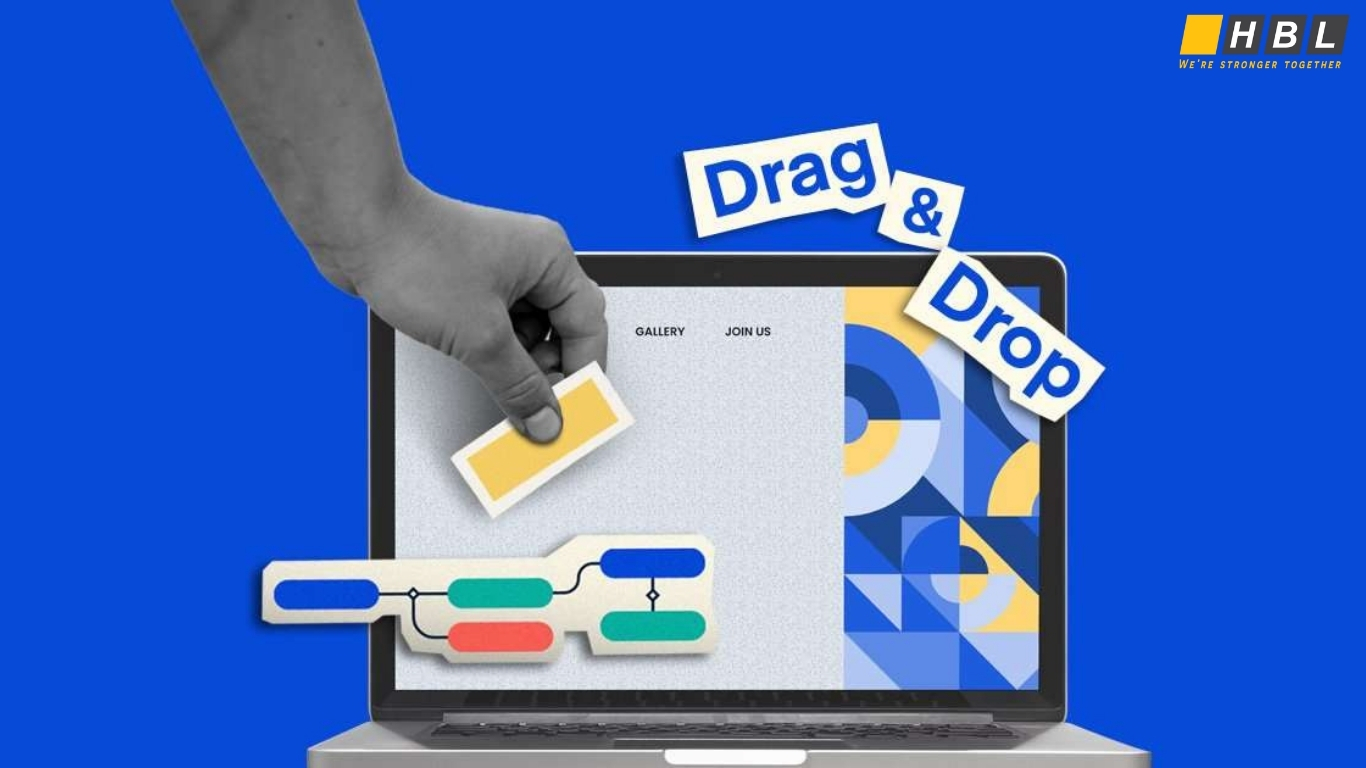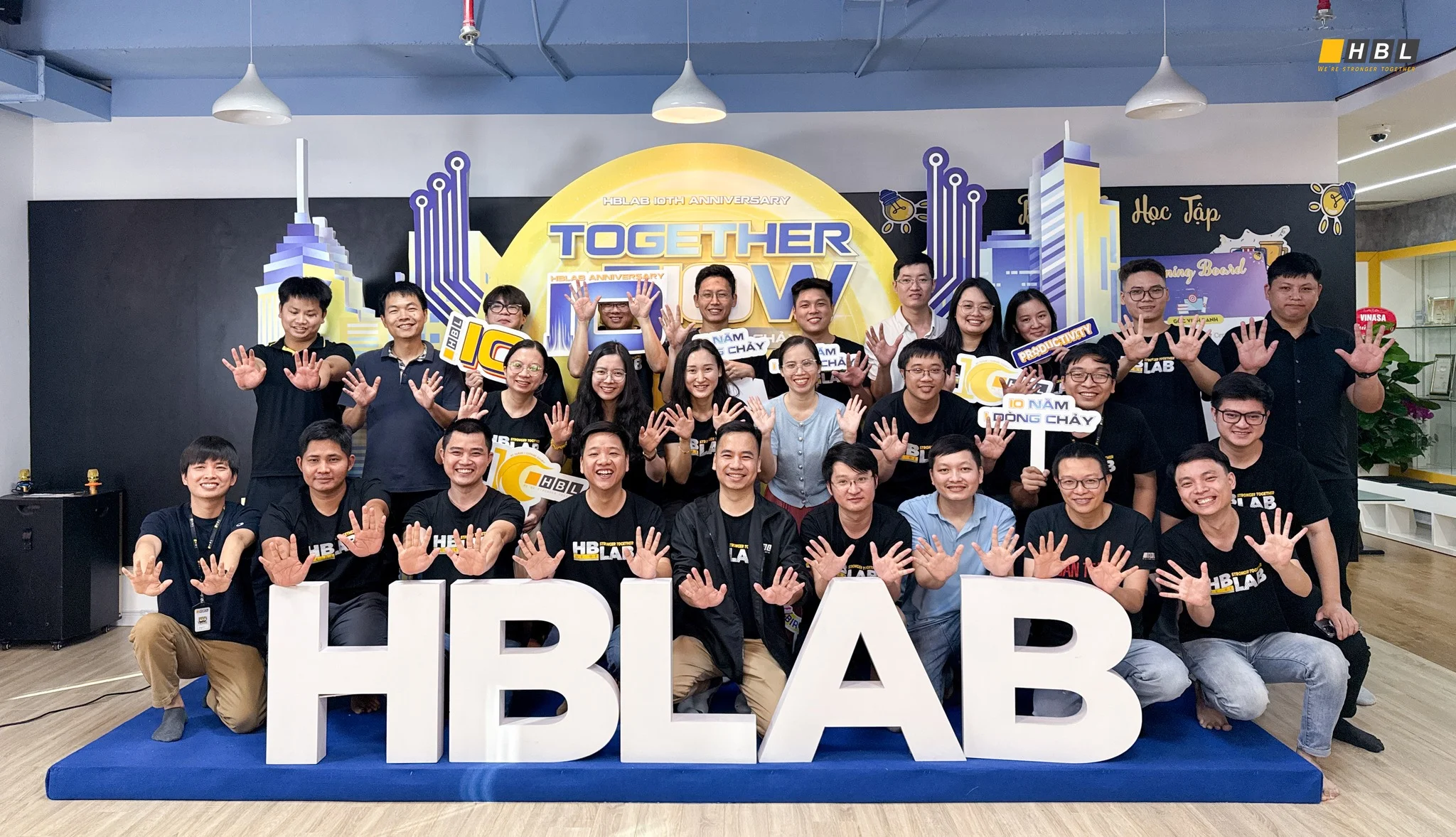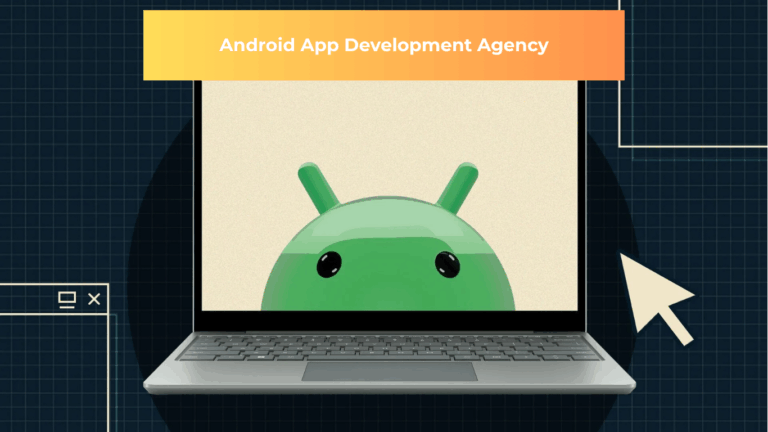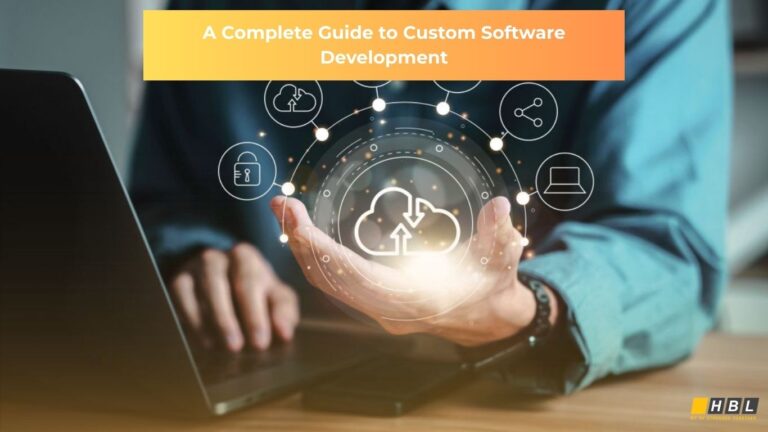Explore custom application development: definition, 6-step process, when to choose custom, low-code vs full-code comparison, and related services to make informed decisions quickly.
Quick Summary
Fast definition: Custom application development is designing, building, and running software tailored to your specific business problems, optimizing integration and security when off-the-shelf solutions cannot meet your specialized workflows.
6-step process: Identify needs → Build prototype → Choose low-code or full-code → Develop solution → Test and UAT → Go-live with continuous optimization to ensure performance and maintainability.
Decision guide: Choose custom application development when you need differentiation, deep integration, or industry compliance; consider low-code for faster launches; 80% of organizations use citizen development to support IT; for safe implementation, consult HBLAB.
What Is Custom Application Development?
Custom application development is the complete journey of designing, creating, launching, and maintaining software that fits your exact business requirements. Think of it as commissioning a tailored suit instead of buying one off the rack. While ready-made software serves general audiences, custom application development addresses your particular workflows, compliance needs, integration challenges, and competitive advantages that generic software simply cannot deliver.
The core difference lies in purpose. It starts with your unique problems and builds solutions around them, whereas off-the-shelf products ask you to reshape your processes to fit their limitations.
When Custom Application Development Makes Sense
There are five clear situations. First, when your business processes are non-standard or highly specialized and cannot be replicated by pre-built software. Second, when you require deep integration with legacy systems, proprietary platforms, or multiple third-party services that need to communicate seamlessly.
Third, this solution proves necessary when regulatory compliance demands like HIPAA, PCI, or GDPR require custom security controls and detailed audit trails. Fourth, when customer experience serves as your competitive differentiator and you need unique interfaces with personalized workflows. Fifth, when your scalability and performance requirements exceed what standard platforms can deliver without locking you into vendor dependencies.
Understanding scope helps set realistic expectations. This is not an instant solution. Projects typically span 3 to 12 months for initial MVP delivery and require ongoing maintenance afterward. Initial investment ranges from $20,000 for straightforward apps to $200,000+ for enterprise solutions, but returns typically materialize within 12 to 24 months through efficiency gains, eliminated licensing fees, and competitive advantages.
How It Really Works
Understanding how it unfolds means recognizing two distinct paths: low-code platforms and full-code traditional development. Each approach serves different scenarios, and choosing correctly depends on your requirements around security, performance, extensibility, and control.
The Low-Code Path
Low-code uses visual drag-and-drop interfaces, pre-built components, and templates to speed up creation. Platforms like Microsoft Power Apps, Mendix, and OutSystems enable citizen developers—business users with limited coding skills—to build functional applications through custom application development techniques.

Low-code works best for internal business tools like workflow automation, dashboards, and CRM customizations. This approach suits MVPs requiring 3-day to 3-week turnaround for proof-of-concept validation. Low-code custom application development fits projects with straightforward logic and minimal third-party integrations. Teams facing developer shortages or budget constraints under $50,000 often choose this route.
When considering low-code, check these factors: moderate security needs for internal use, standard performance under 10,000 concurrent users, and minimal custom integrations. Deployment typically happens through cloud-hosted services with limited on-premise options. The risk in low-code includes vendor lock-in, licensing fees that scale with users potentially reaching $100 to $5,000 monthly, and limited customization beyond platform capabilities.
Read more: Transform Your Business with Low Code No Code Platforms
The Full-Code Path
Traditional custom application development involves writing code from scratch using languages like JavaScript, Python, C#, or Java. Through a full-code approach, developers architect every component from database schemas to API endpoints, ensuring complete control over functionality, performance, and security.
Full-code excels for enterprise applications requiring compliance with HIPAA, PCI-DSS, or GDPR, incorporating custom encryption and access controls. This approach handles high-traffic systems processing 10,000+ requests per second with sub-100ms latency requirements.
Full-code manages complex business logic involving AI and ML models, real-time data processing, or integration with five or more legacy systems. Long-term scalability through modular architecture supports 10x user growth without platform rewrites.
Validate these requirements: enterprise-grade security with data encryption at rest and in transit plus role-based access control, sub-second performance, and unlimited extensibility. Deployment in full-code includes hybrid cloud, multi-tenant services, or on-premise with full ownership. The trade-offs in full-code mean higher upfront costs between $50,000 and $200,000+, longer timelines of 6 to 12 months, and the need for skilled developers.
Making the Right Choice
Deciding between low-code and full-code requires examining your non-functional requirements. Security needs, performance targets, integration complexity, and future scalability all influence which path serves you best.
For projects with under 100,000 users and standard workflows, a modular monolith groups related functionality into modules within a single codebase, simplifying deployment. For enterprise custom application development requiring independent scaling, microservices decompose the application into independent services, each with its own database and API.
Advantages of Custom Application Development
The advantages of custom application development go beyond vague benefits like “flexibility” and “scalability.” Successful custom application development creates measurable improvements through post-deployment KPIs tied to operational efficiency, quality, and business impact.
Speed in Custom Application Development
Time-to-change measures how quickly custom application development delivers new features from commit to production. Elite-performing teams using custom application development achieve deployment in under one day, while lower performers take weeks. CI/CD pipelines and modular architecture can reduce lead time by 40 to 60 percent compared to rigid platforms requiring vendor approval.
Track commit-to-deploy duration in your process using Git hooks and deployment logs. Set your baseline in the first 90 days, then target 20 percent reduction quarterly.
Deployment Frequency
High-performing teams deploy multiple times daily, enabling rapid experimentation and bug fixes. Custom application development with automated testing and feature flags supports frequent releases without destabilizing production.
Count production deployments per week in your custom application development process. Elite targets daily releases, high performers achieve weekly deployments, and medium performers hit monthly cadences.
Quality
UAT pass rate reveals what percentage of features pass user acceptance testing on first submission in projects. Rates above 85 percent indicate strong alignment between custom application development teams and business requirements. Embedded stakeholder feedback loops during prototyping achieves 90 percent+ pass rates.
Calculate this metric as features passing UAT divided by total features tested, multiplied by 100. Track through test management tools like Jira, Azure DevOps, or TestRail.
Recovery Speed
Mean time to restore service measures how quickly teams recover from production incidents. Elite performers restore service in under one hour, while lower performers take days. Observability features like logging, monitoring, and alerting plus documented runbooks reduces MTTR by 50 percent or more.
In monitoring, measure total downtime divided by number of incidents. Set targets like 95 percent of incidents resolved within 4 hours.
Cost Savings
Custom application development replaces 3 to 7 SaaS subscriptions on average, saving $1,500 to $10,000 monthly in licensing fees. One manufacturing client using custom application development reduced inventory costs by 15 percent ($50,000 yearly) after replacing Excel with a custom manufacturing execution system.
For custom application development ROI, audit current software spend and calculate as annual savings minus custom application development TCO, divided by custom application development TCO, multiplied by 100.
Challenges
Every custom application development decision involves trade-offs. Recognizing anti-patterns in custom application development early prevents costly mistakes and ensures long-term sustainability.
Over-Customization
Building every conceivable feature upfront in custom application development creates bloated applications with 200+ screens nobody uses. Maintenance costs in over-customized custom application development spiral to 30 to 50 percent of original development cost annually.
Avoid this custom application development pitfall by starting with MVP containing only core workflows. Launch custom application development in 8 to 12 weeks and iterate based on real user feedback. Use feature flags in custom application development to enable progressive rollout and A/B testing.
Vendor Lock-In
Low-code platforms in custom application development charge per-user or per-transaction fees that escalate as your business scales. Some custom application development platforms lack export functionality, trapping your data.
Mitigate custom application development platform risk by negotiating enterprise licensing with usage caps. Architect APIs in custom application development to abstract platform dependencies and maintain contingency budget for full-code migration if lock-in becomes prohibitive.
Hidden Costs
Cloud infrastructure costs in custom application development can exceed $5,000 monthly for apps serving 50,000+ users if not optimized. Misconfigured auto-scaling in custom application development amplifies expenses during traffic spikes.
Control custom application development infrastructure costs by implementing infrastructure-as-code with governance policies. Set budget alerts and use reserved instances in custom application development for 30 percent cost savings. Monitor custom application development expenses with AWS Cost Explorer or Azure Cost Management.
Security Gaps
Retrofitting security controls in custom application development after launch costs 5 to 10 times more than building them in initially. Data breaches resulting from poor custom application development security average $4.35 million in costs plus regulatory fines.
Adopt DevSecOps in custom application development by integrating security scanning into CI/CD pipelines. Conduct threat modeling during custom application development design and implement zero-trust architecture with least-privilege access. For healthcare and finance custom application development, map HIPAA, PCI, and GDPR requirements into architecture from sprint zero.
Turn insights into action—get the IT playbook now!
The Complete Process
Success in follows a structured approach that balances speed with quality. The six-stage process ensures alignment between technical execution and business objectives.
Stage 1: Identify Requirements in
Effective starts by thoroughly understanding the problem you are solving. Document your existing processes, needs, and gaps in detail before beginning . This foundation in helps productive conversations about technical details, timelines, and costs.
List specific features required in your project. Identify who will use the application and how they will interact with it. Define success metrics for like time saved, errors reduced, or revenue increased.
Stage 2: Choose Your Partner
Selecting the right partner determines success or failure. The ideal company understands your business objectives and has technical expertise to deliver. They collaborate to solve problems in , not just build trendy platforms.
Interview several vendors and ask hard questions. Verify their process keeps everyone aligned from beginning to end. Check portfolio for similar projects in your industry.
Stage 3: Plan Your Project
Thorough planning prevents poor performance in . A comprehensive discovery process allows stakeholders and your team to work through every project aspect. At this stage, refine your requirements list and review prototypes modeling functionality and user experience.
Resist rushing through discovery in . Prior preparation in prevents costly changes later. Document decisions made during planning for future reference.
Stage 4: Develop Your Solution
The actual work of uses selected programming languages and technology stacks. Often happens simultaneously with testing, allowing analysis and corrections before delivery. Close collaboration among software engineers, quality assurance engineers, and design engineers directly affects quality.
In , prioritize modularity so each component functions independently. Focus on scalability to ensure the application grows alongside business needs.
Stage 5: Test Your Work
Testing in starts with unit testing to check individual components, followed by integration testing to verify how different modules work together. User acceptance testing in gathers feedback from real users and ensures the application meets their needs. Security testing in identifies and addresses vulnerabilities that could expose the system to threats.
Rigorous testing in catches bugs and creates a product ready to launch. Document test results throughout to track quality trends.
Stage 6: Deploy and Optimize
Once passes all testing phases, deploy to the live production environment. Monitor performance closely during initial launch to catch any issues. After deployment, requires measuring crucial metrics, tracking performance, and making adjustments to ensure optimal output.
The process does not end at launch. Ongoing optimization maintains efficiency and keeps customers satisfied. Plan for maintenance as 20 to 30 percent of initial development cost annually.
>>Let us walk you through each stage of this process!
Industry-Specific
Different industries face unique challenges that addresses through specialized solutions.
Healthcare
Healthcare must handle patient information, scheduling, billing, and HIPAA compliance. for healthcare builds security into every layer while creating better experiences for patients. Healthcare integrates with electronic health records and supports telemedicine workflows.
Through , healthcare providers achieve 100 percent compliance with regulations while improving patient care efficiency. Healthcare reduces appointment scheduling time from days to minutes.
Finance
Financial sector provides specialized tools for risk management, fraud detection, and compliance with regulations like SOX. in finance offers the agility needed to keep up with changing market conditions and security threats. Finance handles millions of transactions daily with sub-second response times.
for finance implements advanced encryption and multi-factor authentication. Finance meets PCI-DSS requirements through proper cardholder data environment segmentation.
Retail
Retail creates personalized ecommerce platforms integrating with inventory management, payment gateways, and customer relationship tools. Solutions for better shopping experiences and backend management. Retail personalizes product recommendations using machine learning.
Through , retailers increase customer retention by 50 percent with tailored loyalty programs. Retail boosts engagement from 8 percent to 45 percent monthly active users.
HBLAB—Your Trusted Partner
The technique requires more than writing code—it demands aligning technology with business strategy, embedding compliance from day one, and ensuring long-term maintainability. HBLAB brings over a decade of expertise delivering solutions that scale with your growth.
Why Choose HBLAB for
- 630+ Professionals Delivering Excellence
Our global team spans development, design, quality assurance, and site reliability disciplines, ensuring end-to-end development execution from ideation to production support. 30 percent of our staff are senior-level engineers with 5+ years experience who have architected systems handling millions of transactions daily.

- CMMI Level 3 Certified : CMMI Level 3 certification validates our commitment to repeatable, optimized processes—reducing defects by 40 percent and ensuring delivery timelines.
- AI-Enhanced Since 2017
We have partnered with institutions like VNU’s Institute for AI to pioneer incorporating RAG pipelines, guardrail implementations, and machine learning model deployment—giving your business a competitive edge through intelligent automation. - Cost-Efficient
Our flexible offshore and nearshore models deliver enterprise-grade solutions at 30 percent lower cost than in-house teams, without compromising quality or communication. - Flexible Engagement
Choose the model that fits your needs: dedicated team for long-term partnerships, offshore development for cost-effective with clear requirements, or onsite consulting for intensive collaboration.
Conclusion
This represents a strategic investment in operational excellence, customer differentiation, and long-term competitiveness. By choosing the right approach between low-code and full-code, embedding compliance and reliability practices early, and measuring success through post-deployment KPIs, businesses unlock ROI within 12 to 24 months.
The global market is growing at 21.2 percent annually, reaching $53.95 billion in 2025. Enterprises investing in solutions today will outpace competitors locked into rigid platforms tomorrow.
Whether you are migrating Excel processes, building HIPAA-compliant telehealth platforms, or integrating AI agents securely, principles remain constant: start with clear requirements, choose the right architecture, automate compliance, and iterate based on real user feedback.
Frequently Asked Questions
1. What are the 7 stages of app development?
The seven stages are: requirements gathering and discovery, architecture design and prototyping, development approach selection between low-code and full-code, agile development with sprints, quality assurance testing and UAT, deployment and go-live, plus ongoing maintenance and feature enhancements in custom application development. Elite custom application development teams complete stages one through six in 12 to 16 weeks for MVPs.
2. What is custom web application development?
Custom web application development builds browser-based software tailored to specific business workflows, accessible from any device with internet connectivity. Custom web application development examples include customer portals, project management tools, and ecommerce platforms with unique checkout flows. Unlike desktop apps, this approach requires no installation and supports real-time collaboration.
3. What are the 7 types of application software?
The seven types are word processors, spreadsheets, presentation software, database management systems, web browsers, email clients, and custom business applications. It focuses on creating type seven—software built for specific organizational needs that off-the-shelf tools cannot address in standard custom application development.
4. How to create your own custom app?
To create through custom application development: define your problem and success metrics like reducing manual entry by 50 percent, choose low-code platforms for simple logic or hire developers for complex custom application development needs, build an MVP through custom application development with core features in 8-12 weeks, conduct UAT with real users during custom application development, iterate based on feedback in your custom application development process, and deploy with monitoring and support plan. Budget $20,000 to $200,000 depending on custom application development complexity.
5. How much is an app with 10,000 users worth?
An app’s value in custom application development depends on revenue model and engagement. A custom application development service charging $10 per user monthly generates $100,000 monthly recurring revenue equal to $1.2 million annually, valued at 5 to 10 times ARR equaling $6 million to $12 million in mergers and acquisitions. Enterprise custom application development saving $50 per user monthly in operational costs provides $6 million yearly value.
6. Is Python or C++ better for app development?
Python excels for rapid prototyping in custom application development, AI and ML integration, and backend APIs through Django and Flask frameworks, with 50 percent faster custom application development than C++ but lower performance. C++ suits high-performance custom application development like game engines and real-time trading platforms requiring under 10ms latency and direct hardware control. For most custom application development business apps, Python plus cloud hosting delivers optimal balance of speed and scalability.
7. How to create mobile apps that make $3,000 a day?
Apps earning $3,000 daily equal to $1.1 million yearly through custom mobile application development typically use subscription models with 10,000 users at $9 monthly, in-app purchases for gaming and premium features, or B2B custom application development at $100 to $500 per user monthly for enterprise tools. Custom mobile application development success factors include solving high-value pain points, achieving App Store featured placement driving 30 percent of downloads, and optimizing retention averaging 25 percent after 30 days in custom application development.
8. Can a beginner create an app?
Yes, using no-code platforms for custom application development like Adalo, Glide, and AppSheet that require zero programming—ideal for MVPs with simple operations in custom application development. Beginners can build functional applications through custom application development in 1 to 4 weeks following tutorials. For complex custom application development with payments, AI, and multi-platform support, partner with custom application development agencies or hire freelancers with budgets starting $5,000.
9. Is Google AppSheet free?
Google AppSheet offers a free tier for personal custom application development use with up to 10 users and 2,000 rows monthly. Paid custom application development plans start at $5 per user monthly for Core tier business use, scaling to $10 per user monthly for Enterprise custom application development with advanced features like workflows, external data sources, and offline mode. The free tier suits custom application development prototypes while production apps require paid plans.
10. What is the 80/20 rule in Python?
The 80/20 rule or Pareto principle states 80 percent of results come from 20 percent of effort. In Python custom application development, focus on core libraries like Pandas, NumPy, and Flask that solve 80 percent of use cases, deferring niche packages until needed in custom application development. For custom application development projects, prioritize 20 percent of features delivering 80 percent of user value in MVP.
11. Does NASA use Python?
Yes, NASA uses Python extensively for data analysis, machine learning in Mars Rover image processing, and automation scripts—demonstrating Python’s capability for mission-critical custom application development. Python’s readability and vast scientific libraries like SciPy and Matplotlib make it ideal for research and prototyping in advanced custom application development. NASA also employs C and C++ for performance-critical flight software in custom application development.
12. What language is GTA 5 coded in?
GTA 5 uses primarily C++ for game engine performance through Rockstar Advanced Game Engine in custom application development. Scripting uses proprietary languages for missions and gameplay logic in this entertainment custom application development. C++ provides low-level control over graphics rendering and physics required for open-world games and other performance-intensive custom application development
CONTACT US FOR A FREE CONSULTATION
Read More:
– High Tech Manufacturing: The Future of Advanced Production and Quality Excellence in 2025
– Emerging Technologies in Education: 4 Foundational Advantages to Grasp





